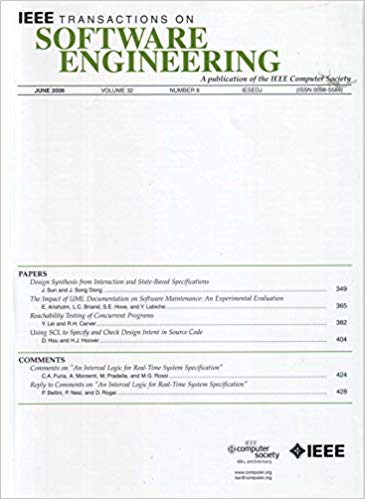Bug-Locating Method Based on Statistical Testing for Quantum Programs
IF 5.6
1区 计算机科学
Q1 COMPUTER SCIENCE, SOFTWARE ENGINEERING
引用次数: 0
Abstract
When a bug is detected by testing a quantum program on a quantum computer, we want to determine its location to fix it. To locate the bug, the quantum program is divided into several segments, and each segment is tested. However, to prepare a quantum state that is input to a segment, it is necessary to execute all the segments ahead of that segment in a quantum computer. This means that the cost of testing each segment depends on its location. We can also locate a buggy segment only if it is confirmed that there are no bugs in all segments ahead of that buggy segment. Since a quantum program is tested statistically on the basis of measurement results, there is a tradeoff between testing accuracy and cost. These characteristics are unique to quantum programs and complicate locating bugs. We propose an efficient bug-locating method consisting of four approaches, i.e., cost-based binary search, early determination, finalization, and looking back, which take these characteristics into account. We present experimental results indicating that the proposed method can reduce bug-locating cost, represented as the number of executed quantum gates, compared with naive methods that do not use the four approaches. The limitations and usefulness of the proposed method are also discussed on the basis of the experimental results.基于统计测试的量子程序bug定位方法
当通过在量子计算机上测试量子程序检测到错误时,我们希望确定其位置以修复它。为了找到漏洞,量子程序被分成几个片段,每个片段都被测试。然而,为了准备一个输入段的量子态,有必要在量子计算机中执行该段之前的所有段。这意味着测试每个部分的成本取决于它的位置。我们也可以定位有bug的段,只有当确认在该有bug的段之前的所有段中没有bug时。由于量子程序是在测量结果的基础上进行统计测试的,因此在测试精度和成本之间存在权衡。这些特征是量子程序所独有的,并且会使查找错误变得复杂。我们提出了一种有效的漏洞定位方法,包括基于成本的二分搜索、早期确定、最终确定和回顾分析四种方法。实验结果表明,与不使用这四种方法的朴素方法相比,所提出的方法可以降低错误定位成本,即执行量子门的数量。在实验结果的基础上,讨论了该方法的局限性和有效性。
本文章由计算机程序翻译,如有差异,请以英文原文为准。
求助全文
约1分钟内获得全文
求助全文
来源期刊

IEEE Transactions on Software Engineering
工程技术-工程:电子与电气
CiteScore
9.70
自引率
10.80%
发文量
724
审稿时长
6 months
期刊介绍:
IEEE Transactions on Software Engineering seeks contributions comprising well-defined theoretical results and empirical studies with potential impacts on software construction, analysis, or management. The scope of this Transactions extends from fundamental mechanisms to the development of principles and their application in specific environments. Specific topic areas include:
a) Development and maintenance methods and models: Techniques and principles for specifying, designing, and implementing software systems, encompassing notations and process models.
b) Assessment methods: Software tests, validation, reliability models, test and diagnosis procedures, software redundancy, design for error control, and measurements and evaluation of process and product aspects.
c) Software project management: Productivity factors, cost models, schedule and organizational issues, and standards.
d) Tools and environments: Specific tools, integrated tool environments, associated architectures, databases, and parallel and distributed processing issues.
e) System issues: Hardware-software trade-offs.
f) State-of-the-art surveys: Syntheses and comprehensive reviews of the historical development within specific areas of interest.
 求助内容:
求助内容: 应助结果提醒方式:
应助结果提醒方式:


